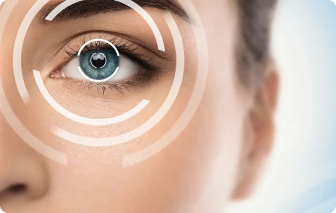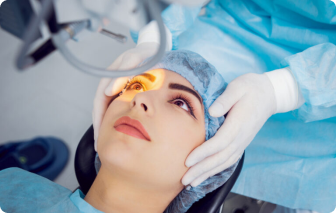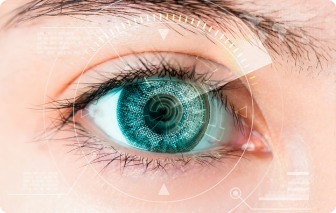எங்கள் கண் நிபுணர்களுடன் புத்தக ஆலோசனை

நிபுணர்கள்
யார் கவலைபடுவர்
700+
கண் மருத்துவர்கள்
சுற்றி
உலகம்
200+
மருத்துவமனைகள்
ஒரு மரபு
கண் பராமரிப்பு
60+
ஆண்டுகள் நிபுணத்துவம்


அக்கறை கொண்ட நிபுணர்கள்
700+
கண் மருத்துவர்கள்
உலகம் முழுவதும்
200+
மருத்துவமனைகள்
கண் பராமரிப்பு மரபு
60+
ஆண்டுகள் நிபுணத்துவம்

ஒரு நாள் பராமரிப்பு அறுவை சிகிச்சை
மருத்துவர்களின் நிபுணர் குழு
மிகக் குறைந்த நேரத்தில் இயல்பு நிலைக்குத் திரும்பும்
அறுவை சிகிச்சைக்கு முந்தைய மற்றும் பிந்தைய ஆலோசனை
4 பார்வை திருத்தும் நுட்பங்கள்: PRK, LASIK, ReLEx SMILE மற்றும் ICL

This procedure involves the careful removal of the topmost layer of the cornea also known as the epithelium, followed by Excimer laser (wavelength 193 nm) delivery which reshapes the corneal surface – to correct the refractive power of the eye. A contact lens is placed for a few days to support the healing of the eye, the epithelium is very thin (50 microns) and usually grows back within 3 days.

This is a very popular procedure and involves creation of a flap (100-120 micron) in the superficial layer of the cornea. This flap can be created by two methods:
மைக்ரோகெராடோம்: This a small specialised blade that dissects the flap at the accurate depth, hence Microkertome assisted LASIK is also known as BLADE LASIK.
ஃபெம்டோசெகண்ட் லேசர் (அலைநீளம் 1053nm): This is a specialised laser which creates a flap precisely at the desired depth, it is very different from Excimer laser described above and hence needs a separate machine for delivery. Femtosecond laser assisted LASIK is also known as FEMTO-LASIK.
After the flap is created by any of the above two methods, it is lifted and the residual bed is then treated with Excimer laser (same laser used in PRK). At the end of the procedure the flap is reposited back in place, on the corneal bed and patient is discharged with medication.

This is the most advanced refractive surgery and requires only Femtosecond Laser. Refractive power of the eye is corrected by using femtosecond laser to create a lenticule (of predetermined size and thickness) within the layers of the cornea. This lenticule can then be extracted in two ways: Femtosecond Lenticule Extraction (FLEX) (4-5mm incision) Small Incision Lenticule Extraction (SMILE) (2mm incision) Extraction of this lenticule results in altered shape of the cornea and corrects the refractive power. This surgery is popularly known as blade-less, flap-less refractive surgery.

This is the most attractive alternative to LASIK and other refractive procedures as it is a removable lens implant. Here are a few main reasons people choose ICL:
மிகவும் துல்லியமான முடிவுகள்: ICL is a proven procedure with outstanding outcomes.
சிறந்த இரவு பார்வை: Many patients are able to see better at night after the ICL procedure, thus achieving excellent night vision.
அதிக கிட்டப்பார்வைக்கு சிறந்தது: It gives patients sharp clear vision and corrects and reduces near-sightedness.
The effects of laser eye treatment (LASIK procedure) are permanent. Sometime, the benefits might decrease over time. Nevertheless, for most patients, the results of LASIK surgery will last a lifetime.
It is advisable to avoid undergoing the LASIK eye surgery procedure for patients on systemic medicines, preventing the complete recovery of the cornea. These are the diseases like diabetes or conditions wherein the collagen level in the body is not normal, for example, the Marfan syndrome. The eligibility of the candidate will be established through a Comprehensive eye check-up which will be done before the surgery.
If you go for a LASIK surgery procedure, the doctor will require an initial baseline evaluation to determine if you are a suitable candidate for the laser eye operation.
You might be able to see clearly the same day or the next. However, for complete recovery and to stop using recommended drops/medications, it can take up to 3 to 6 months. Blurriness immediately after the surgery is normal. Your eyes will take some amount of time to settle post-surgery. Therefore, you must do follow-up check-ups regularly to make the most of the procedure.
There is no unalterable age limit for LASIK, though doing so before age 40 would be the most recommended. The surgery depends on the eye health of the individual. Patients with no organic reason for vision loss, such as cataracts or other medical complications, can easily go for LASIK surgery after initial evaluation.
Immediately after LASIK treatment, the eyes may itch or burn or feel like something is stuck in the eye. There can be a certain level of discomfort and mild pain in some cases. The doctor may suggest a mild pain-relieving medicine for the same. The vision can be blurred or hazy.
Instilling numbing eye drops helps with the urge to blink in the patients during the laser eye treatment. A device is also used to keep the eyes open in times of need during the surgery.
LASIK eye operation is not painful. Before starting the procedure, the surgeon will use numbing eyedrops for both eyes. While there might be a feeling of pressure during the ongoing procedure, there will be no feeling of pain.
Laser eye operation for cataracts is a viable option since it helps rectify the refractive errors by reshaping the cornea using a laser. However, in cataract cases, LASIK will not correct the blurred vision caused by this disorder.
Some people have blurred vision right from birth due to some congenital disabilities, while others have developed blurred vision with time. In some cases, blurry vision can be rectified with the help of LASIK eye treatment or surgery.
In this type of procedure, the tissues of the corneal surface are removed from the corneal surface (front part of the eye), which helps maintain the effects for a lifetime and are, therefore, permanent. The surgery helps with the correction of refractive error and clarity of vision.
Contrary to public notion, LASIK is not a very costly treatment. It is imperative to keep in mind that laser eye surgery prices can vary due to different factors like infrastructure, technology, and equipment, ranging from Rs. 25000 to Rs. 100000.